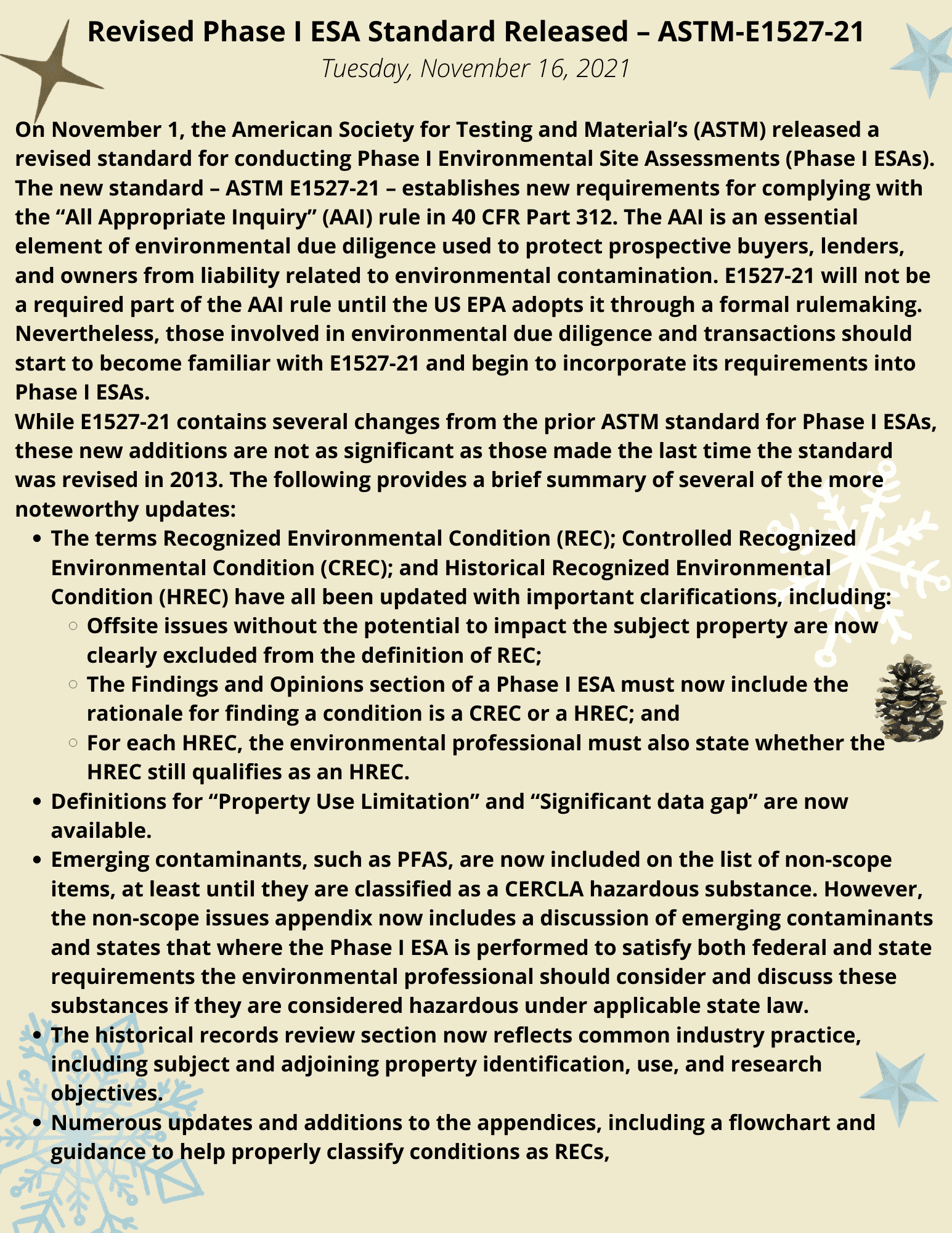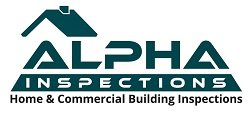
There is a standard that is required when it comes to environmental concerns. Let’s take a look at the Phase 1 ESA standard released by the ASTM – American Society for Testing and Materials or ASTM International as it is more commonly known.
Background of ASTM
ASTM is a worldwide company that develops and publishes technical standards for materials, systems, products and services. The latest Phase 1 ESA standard ASTM E1527-21 was released in November 2021.
Purpose
The purpose of Phase 1 ESA or Environmental Site Assessment is to define the best practice for conducting an environmental site assessment of commercial real estate or a parcel in regards to the ranges of contaminants. The previous phase had been in use for the past 8 years.
Why This is Important
The new standard establishes new requirements for complying with the “All Appropriate Inquiry” (AAI) Rule in 40 CFR Part 312. The AAI is an essential element of due diligence used to protect prospective buyers, lenders, and owners from liability related to environmental contamination. E1527-21 will not be a required part of the AAI rule until the US EPA adopts it through formal rulemaking. Nevertheless, those involved in environmental due diligence and transactions should start to become familiar with E1527-21 and begin to incorporate its requirements into Phase 1 ESAs.
Newest Updates
While E1527-21 contains several changes from the prior ASTM standard for Phase 1 ESA’s, these new additions are not as significant as those made the last time the standard was revised in 2013. Here is a brief summary of the most noteworthy:
Recognized Environmental Condition (REC); Controlled Recognized Environmental Conditions (CREC); and Historical Recognized Environmental Condition (HREC)
These terms have all been updated with important clarifications, including:
- Offsite issues without the potential to impact the subject property are now clearly excluded from the definition of REC.
- The Findings and Opinions section of a Phase 1 ESA must now include the rationale for finding a condition is a CREC or an HREC;
- Also, for each HREC, the environmental professional must also state whether the HREC still qualifies as an HREC.
Property Use Limitation” and “Significant Data Gap
Definitions for “Property Use Limitation” and “Significant data gap” are now available
PFAs and Emerging Contaminants
Emerging contaminants, such as PFAS, are now included on the list of non-scope items, at least until they are classified as a CERCLA hazardous substance. However, the non-scope issues appendix now includes a discussion of emerging contaminants and states that where the Phase 1 ESA is performed to satisfy both federal and state requirements the environmental professional should consider and discuss these substances if they are considered hazardous under applicable state law.
Historical Records Review Section
The historical records review section now reflects common industry practices, including subject and adjoining property identification, use, and research objectives.
Appendices
Numerous updates and additions to the appendices, including a flowchart and guidance to help properly classify conditions as RECs.
More Information
If you would like more information about the new changes, check out The National Law Review.


